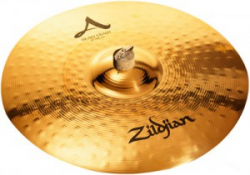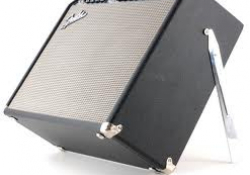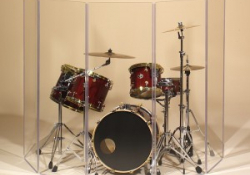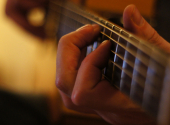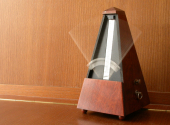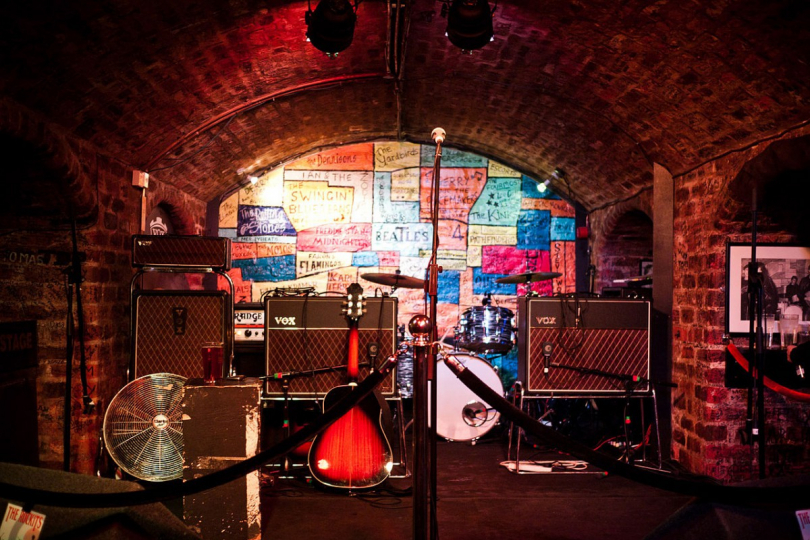
Want a Good Sound? The Four Most Common Mistakes in Live Performance
I have been working as a sound engineer for about twenty years. During that time I have had the opportunity to provide the sound for performances in places ranging from the worst shitholes to clubs, community centers, open air events, all the way up to the Manchester MEN Arena during my stay in the UK. This article is dedicated to emerging and semi-professional bands, as their gigs are by far the most numerous. But it can also prove useful to sound engineers who work in clubs, as they often struggle with poor acoustics or small spaces.
I would like to start by pointing out that the job of the sound engineer isn’t to faithfully transfer the sound of the musician to the listener's ear. This is only true in the rare cases that the band’s musicians have devoted a lot of energy to their choice of instruments, sound banks, and amplifiers, as well as to rehearsing their own playing and interplay with each other. Usually, the sound engineer has to adjust the sound for the resulting whole to work well. A good sound engineer—who doesn’t want to kill the audience—will typically take the stage sound and send to the front of house speakers only that which is still missing. Disregarding the truly inexperienced sound engineers, it becomes clear at this point that how a band sounds is not a matter of the sound engineer, but primarily how the band sounds on stage. I'll talk about the classic scheme of small and medium-sized halls, using stage monitors, and capturing all the instruments individually.
1) Drums—cymbals
Cymbals are among the deadliest sounds ever to hit the stage. The drums are usually placed in the middle of the stage and the other musicians stand around them. If a drummer likes to have a hundred ton cymbal that will ring for an hour after it is struck, then this is usually an unsolvable problem. No one can hear anyone on stage, so everyone adds volume and the result is a big ball of aggressive noise. The sound engineer then has no choice but to blast this drivel off the stage through a PA so that at least the vocals can be heard, which actually can't be done either, because the singer is too intimidated to sing properly and her microphone picks up the biggest cymbal one meter behind her. Working with a compressor on a vocal like this remains a fantasy.
Conclusion: loud, fat, heavy cymbals are definitely a NO-GO. A drum hit should be twice as loud as a cymbal hit. Only then does the sound engineer have room to finally work with the sound, perhaps by using overheads, which cannot be used at all in most clubs. You can argue that these are exactly the kind of cymbals you love so dearly... Well, the listener in the club can’t tell what timbre the cymbal has, but they can fucking tell if it's ripping their head off.
2) Guitar
The guitar amplifier was invented around 1930 to amplify the Hawaiian guitar. I think it was Leo Fender who used the same principle for his experiments in the 1940s until the classic guitar amp and combo as we know them today were created. The musician would set the amp up behind him so that the audience could hear it and so that it could also be heard on stage. This principle was based on the need at the time to amplify the guitar and bass so that it could be played in a pub where there was no other sound system. However, this principle finally came to an end in the late 1960s after the legendary Woodstock, when it became clear that there were huge advantages to using a powerful PA system in working with sound.
The guitar amplifier is very directional in principle. This means that it plays very loudly in the axis of the speakers. Outside the speaker axis, the sound changes drastically. Most guitarists have the amp on the floor or put the combo on a chair, but the maximum height of the speakers is around chest height. This is how they have the combo in the rehearsal room, and logically they then use a similar position when performing. The problem is that what the guitarist hears in this case is far from being his actual sound. His sound is just what is heard in the axis of the speakers. Have you tried listening to what your guitar sounds like right in front of the speaker? There, where you place the microphone? Nasty, huh? It roars too much, there's no bass... and it's awfully loud compared to when I listen just a little bit off to the side. Adding the height of the stage to the chair the combo is placed on, we find that the axis of the combo speakers is almost exactly at the height of the listener's ears... and the guitarist's behind. It almost seems like the guitarist's ears are up his ass?
Nowadays, you will find a PA in almost every club. The use of the combo as a sound source for the listener is a 50-year-old relic. It cannot reasonably cover a large number of listeners and its sound changes rapidly depending on the listener's position. On the other hand, directionality can be put to good use on stage, where we should generally try to be as quiet as possible. So what is the ideal position for a combo? Back in the day, Leo Fender invented pegs attached to the side of the combo so that it could be tilted. So the guitarist should have the combo pointed at his ears and preferably in a way that doesn't obstruct the other band members from hearing their instruments. If the combo can't be turned down because of the timbre, I definitely recommend a power brake or replacing the amp. A 100+ watt amp for a guitar is absolutely pointless. In my opinion, 50W is the upper limit for playing in clubs. Nowadays, it is not a problem to buy great sounding amps that are 30 watts or less, and together with clever placement of the speaker cabinet towards the guitarist's ears, they are perfectly sufficient. If it's a hard rock band that would look stupid with a 15W rattle toy, without that stronghold of theirs, then let them bring it along! Nobody can tell which amp they're playing from anyway (Machine Head uses this, for example—behind their huge stack they hide a small combo with a microphone pointed at the wall). And returning to the sound when the combo/speaker is pointed at the guitarist's ears—it has nothing but advantages: it forces you to adjust the sound that the sound engineer then picks up with the microphone, you can hear yourself perfectly even at a relatively low amp volume, and it's quiet on stage.
If the guitarist simply can't handle the amp anywhere but behind him, he can get a small screen made of plexiglass, like Radim Hladík uses at Blue Effect concerts.
3) Bass
Bass and guitar differ in frequency, power and directionality. The bass is usually pitched an octave lower, needs more power, and is not as directional. What does this mean in practice?
The acoustics of the space in which the band usually performs play a major role here. Since most clubs will typically have basement spaces built out of concrete, burnt brick, granite, etc., without acoustic elements, the reverberation time of bass notes can go up to a few seconds. And it’s not just small clubs. Examples are the Roxy or Akropolis in Prague (I hereby give a big thumbs down to all monument owners who, with their conservative approach, make it impossible to install acoustic elements during the reconstruction of buildings, or to owners who buy expensive sound systems and don't invest a single crown into acoustics). Imagine the reverberation time to be the sound still reverberating in the room after the string is quickly muted. The further away you are from the bass combo, the more you hear that reverb at the expense of the original tone. The long reverb muddles the playing of the instrument, the faster passages blend together, creating a blob that makes the lower range of guitars, vocals, keys indistinguishable... What to do about it?
Here again—the bass amp should not be used to provide sound for the front of house, but for the stage. The wise have already guessed that it is not necessary to have thousands of watts, even just a hundred is enough. Honestly, a hundred watts is quite a lot when not used for frequencies below 80Hz, which are not needed at all (that's the kind of wind that would make your sweatpants jiggle). They're there anyway, even if we dial them down, but just enough. Plus, the sound engineer usually has a DI output so he can pull what's needed. The bass is supposed to sound concretely! On stage, the bass player's rhythm needs to be heard first and foremost, because the band knows the melody (or at least they should). The directionality of the bass isn't that critical. The bass player can certainly point the amp at his ears, but it's not bad if the drummer can hear the bass too. Again, the volume of the bassist should not prevent the others from hearing themselves.
4) Singing
If the whole band sticks to what we've already said, the singer or vocalist may find that they’re all set. Here I would just highlight the three most common mistakes.
The first is holding the microphone. I'm going to talk about the SM58 type microphone because it's the stage standard. The microphone works best when pointed at the singer's mouth. It's unbelievable, but a lot of people hold the microphone under their chin or point it at their nose. The SM58 is designed for lip contact with a grid in the microphone's axis. It just needs to be pointed directly at the mouth, not sideways, and as close by as possible. Then it has well-distorted bass tones, the vocals are thick, surrounding noises are not as audible, and the monitoring works well. However, with this microphone placement it is important not to change position. Any change will drastically affect the vocal volume. For example, guitarist-singers often move away from the microphone when they are checking what the bassist is doing or when looking for the right fret. For a properly balanced sound, the requirement is to keep your mouth glued to the microphone. The technique of moving away from the microphone when singing loud passages needs to be well mastered, otherwise it causes more problems than good. If you can't do it well, it's better not to do it.
This singer has no problem with her singing and its power—and her good choice of microphone, Lewitt, helps...
The second is again about holding the microphone. Someone once grabbed the microphone by the ball head and it's been a mess ever since. It is just that this totally fucks up the frequency and directional characteristics of the microphone, stresses the band around 3Khz and the microphone will almost certainly start to weave. Not that it's always bad—for example, some singers deliberately use it for beatboxing. But singing the whole concert like that is usually stupid.
Third—the singer sings quietly. This is probably the most difficult to change because it requires training. But physics applies on stage, and if a weak signal goes into the microphone, the sound engineer has to boost it a lot. And that only goes so far, because at that point the microphone also starts picking up other nearby sounds, like the drummer's kick drum or my beloved cymbals. In the end it adds up and the vocal microphone spoils the overall mix with noise from the stage.
Here I would like to mention one exception, in which case the microphone should not be held in the axis in front of the mouth - and that is whistling. For whistling it is better to put the microphone to the side, otherwise the whistling is disturbed by blowing on the diaphragm and does not sound good.
A few tips in conclusion
A basic rule that always applies—if I can't hear myself, it's better to turn down the noise that's preventing me from hearing what I want to hear than to add my own volume. When I can't hear myself, it's better to turn down the noise that keeps me from hearing what I want to hear than to add my own volume. I wrote that twice on purpose just to make it clear. The ideal state is accomplished when in the rehearsal room everything can be heard, including the vocals, even without a vocal mic. This means that your instruments, including your vocals, are balanced, that nothing is playing unnecessarily loudly, and that your voice is strong enough.
I recommend a plexiglass screen for the drums in any case. This is always useful, because there is no reason to have unnecessary noise on stage, whether you are playing in a club or in the open air. I recommend a taller one, so that it is at least 30 cm higher than the top cymbal of the drums. The screen should be big enough to fit the microphone stands behind it. Since most bands won't get one anyway, I would at least recommend sound engineers to get one for those clubs where everyone's ears are bleeding.
A drummer-singer should definitely get a good quality headset, because they simply have to move when playing, and this microphone will guarantee the right position when singing. I stress that the microphone has to be of really good quality, otherwise it usually causes feedback or picks up the drums more than the vocals, sounds like a tin can, etc.
And lastly—it is said that the sound engineer mixes the sound of the band. I would argue that the sound engineer mixes the energy the band puts out at a gig. If the band is playing in a sloppy, bland, unenergetic way, the sound engineer can't do anything about it, even if he's the best. You just have to take charge, not be afraid, give it your all. I'm not suggesting to bang on it like a deaf man at the gate, but if I have a band, I want to deliver a performance and not bother the listener with an attempt at production. In England they say, when a band complains about the sound: Shit in, shit out.
Have these tips been helpful to you? Let us know in the comments below.
If you have found an error or typo in the article, please let us know by e-mail info@insounder.org.

